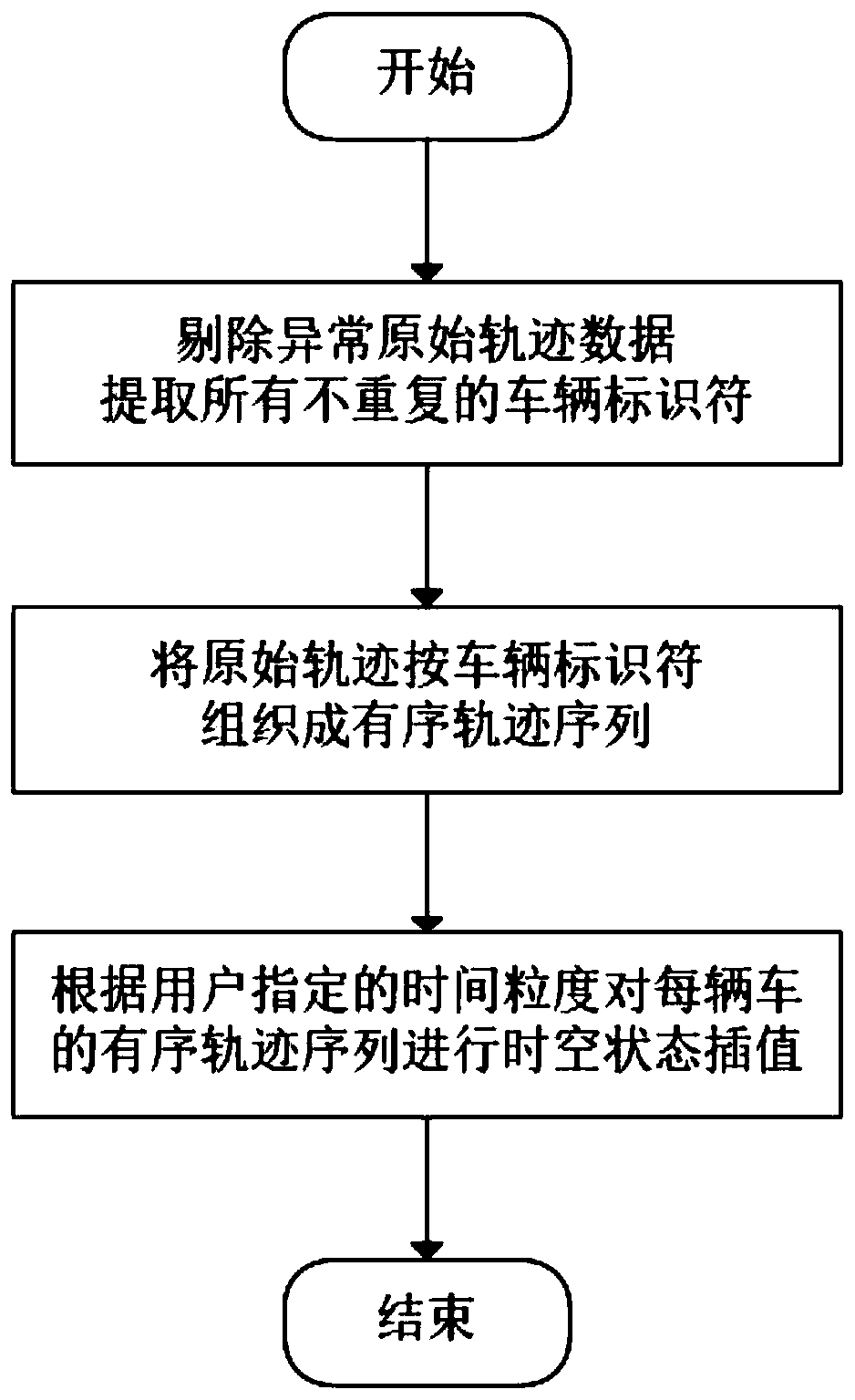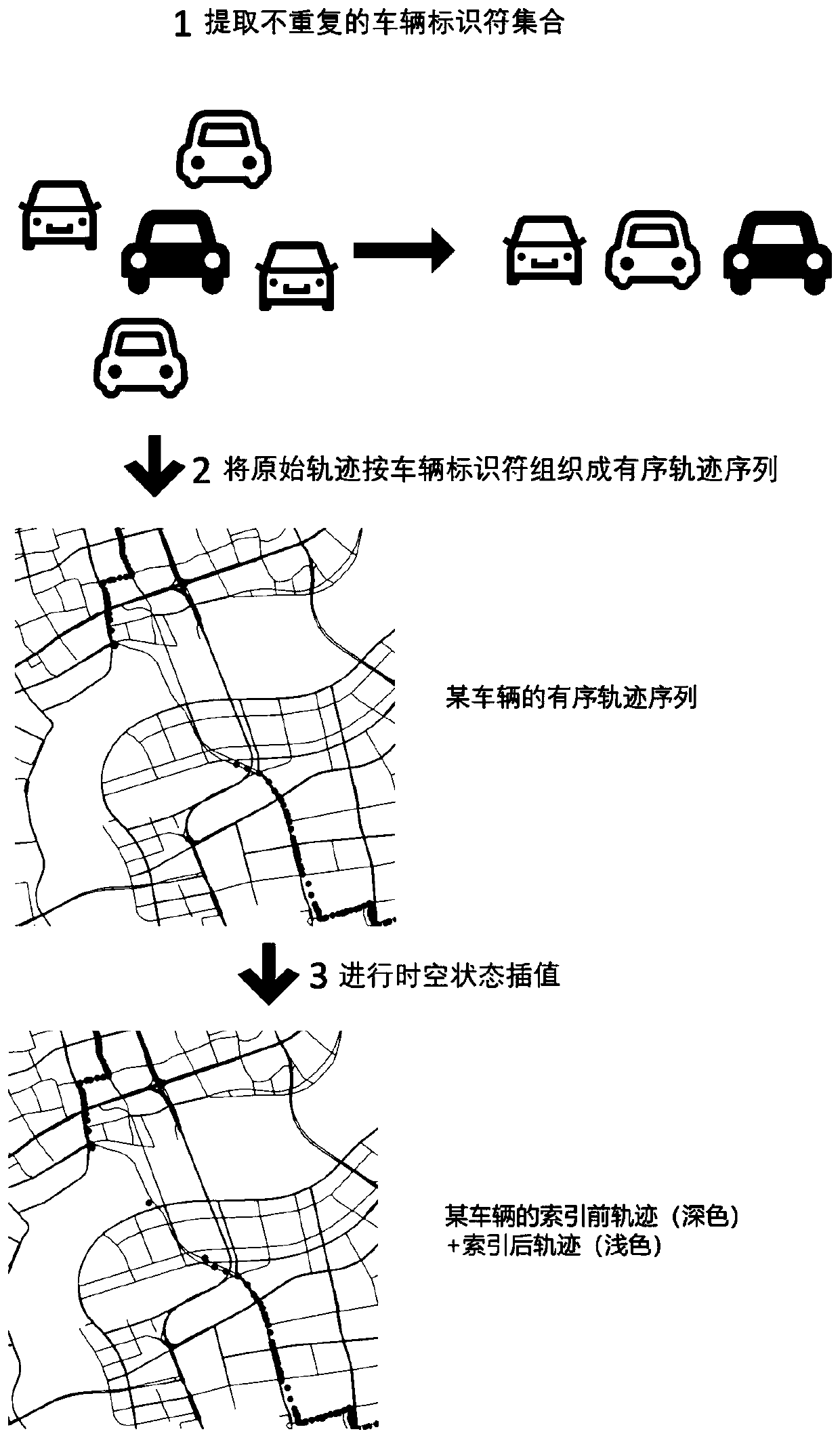Vehicle track data indexing method based on space-time interpolation
A trajectory data and data indexing technology, applied in the field of big data, can solve the problems of no indexing method, etc., and achieve the effects of reducing storage cost, improving efficiency, optimizing query speed and storage cost
- Summary
- Abstract
- Description
- Claims
- Application Information
AI Technical Summary
Problems solved by technology
Method used
Image
Examples
Embodiment
[0050] refer to figure 2 , this embodiment specifically includes:
[0051] Step 1: Input the original trajectory data, and extract the unique vehicle identifier set Array after trajectory preprocessing. Suppose the example trajectory data VT={vt_c|vt_c={carID,time,x,y,state}} is ["001,2016-08-01 00:01:00,20,20,Vacant","002,2016 -08-01 00:00:50,20,20,Vacant","001,2016-08-01 00:01:30,20,20,Vacant","002,2016-08-01 00:02: 50,40,30,Vacant","001,2016-08-01 00:02:30,30,40,Vacant","001,2016-08-01 00:03:10,30,40,Vacant" ], get Array["001","002"] after deduplication.
[0052]Step 2: Organize raw trajectories into ordered trajectory sequences by vehicle identifiers. Before interpolating the raw data, it is necessary to organize the raw data with a large amount of data, disorder, and different frequency sampling into an ordered trajectory sequence according to the vehicle identifier. First, open up storage space for different vehicles, that is, define the track sequence carIDwithInf...
PUM
 Login to View More
Login to View More Abstract
Description
Claims
Application Information
 Login to View More
Login to View More - R&D
- Intellectual Property
- Life Sciences
- Materials
- Tech Scout
- Unparalleled Data Quality
- Higher Quality Content
- 60% Fewer Hallucinations
Browse by: Latest US Patents, China's latest patents, Technical Efficacy Thesaurus, Application Domain, Technology Topic, Popular Technical Reports.
© 2025 PatSnap. All rights reserved.Legal|Privacy policy|Modern Slavery Act Transparency Statement|Sitemap|About US| Contact US: help@patsnap.com



